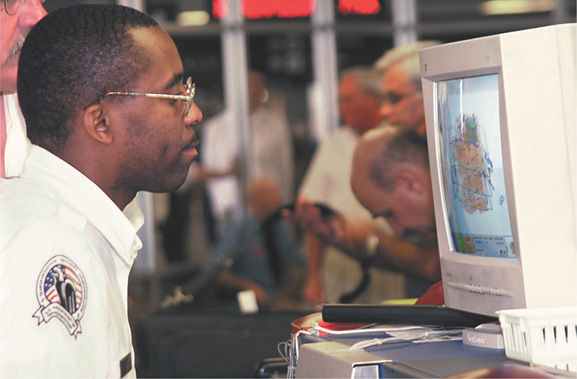Section 1 Understanding Fiscal Policy
Preview
Objectives
After studying this section you will be able to:
- Describe how the government uses fiscal policy as a tool for achieving its economic goals.
- Explain how the government creates the federal budget.
- Analyze the impact of fiscal policy decisions on the economy.
- Identify the limits of fiscal policy.
Section Focus
The federal government takes in money for the budget through taxation and borrowing. The decisions the government makes about taxing and spending can have a powerful impact on the overall economy.
Key Terms
- fiscal policy
- federal budget
- fiscal year
- Office of Management and Budget (OMB)
- Congressional Budget Office (CBO)
- appropriations bill
- expansionary policies
- contractionary policies
The word fiscal comes from the Latin word fisc, which means “basket” or “bag.” Over time, the word came to be linked with a bag of money. Specifically, it meant the “bag,” or pool, of money held by the government. In Chapter 14, you read about how the government collects money, primarily through taxes, and how the government spends its money on a wide variety of programs. In this section you will read about fiscal policy. Fiscal policy is the use of government spending and revenue collection to influence the economy.
Fiscal Policy as a Tool
As you learned in Chapter 14, the federal government takes in and spends huge amounts of money. The federal government spends about $250 million every hour, $6 billion every day, and about $2.3 trillion a year. The tremendous flow of cash into and out of the economy has a large impact on aggregate demand and supply in the economy.
Fiscal policies are used to achieve economic growth, full employment, and price stability. Fiscal policy decisions—how much to spend and how much to tax—are among the most important decisions the federal government makes. These decisions are made each year during the creation of the federal budget.
The Federal Budget
The federal budget is a written document indicating the amount of money the government expects to receive for a certain year and authorizing the amount the government can spend that year.

Federal budget costs include Transportation Security Administration workers who screen airline passengers and luggage for security threats.




